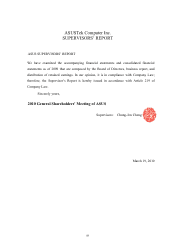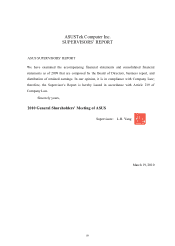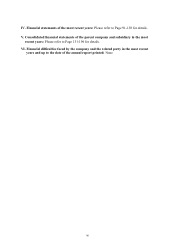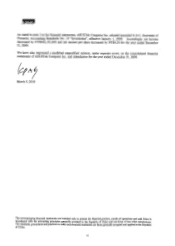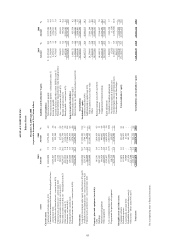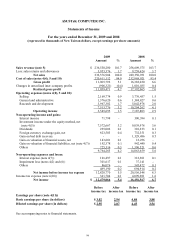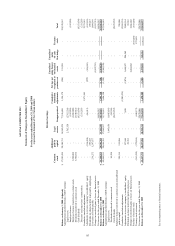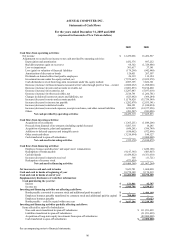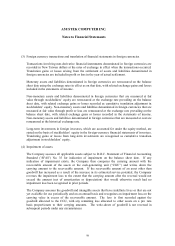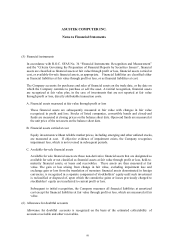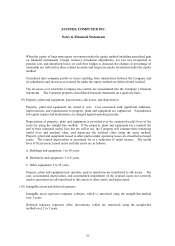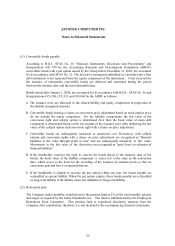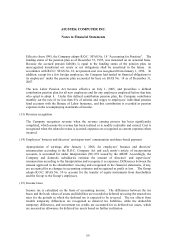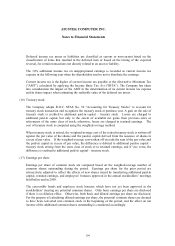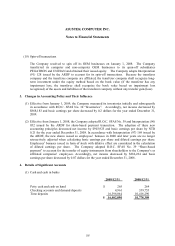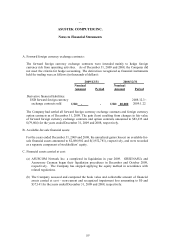Asus 2009 Annual Report Download - page 102
Download and view the complete annual report
Please find page 102 of the 2009 Asus annual report below. You can navigate through the pages in the report by either clicking on the pages listed below, or by using the keyword search tool below to find specific information within the annual report.98
ASUSTEK COMPUTER INC.
Notes to Financial Statements
(3) Foreign currency transactions and translation of financial statements in foreign currencies
Transactions involving non-derivative financial instruments denominated in foreign currencies are
recorded in New Taiwan dollars at the rates of exchange in effect when the transactions occurred.
Translation gains or losses arising from the settlement of assets and liabilities denominated in
foreign currencies are included in profit or loss in the year of actual settlement.
Monetary assets and liabilities denominated in foreign currencies are remeasured on the balance
sheet date using the exchange rates in effect as on that date, with related exchange gains and losses
included in the statements of income.
Non-monetary assets and liabilities denominated in foreign currencies that are measured at fair
value through stockholders’ equity are remeasured at the exchange rate prevailing on the balance
sheet date, with related exchange gains or losses recorded as cumulative translation adjustment in
stockholders’ equity. Non-monetary assets and liabilities denominated in foreign currencies that are
measured at fair value through profit or loss are remeasured at the exchange rate prevailing on the
balance sheet date, with related exchange gains or losses recorded in the statements of income.
Non-monetary assets and liabilities denominated in foreign currencies that are measured at cost are
remeasured at the historical exchange rate.
Long-term investments in foreign investees, which are accounted for under the equity method, are
stated on the basis of stockholders’ equity in the foreign-currency financial statements of investees.
Translating gains or losses from long-term investments are recognized as cumulative transition
adjustment in stockholders’ equity.
(4) Impairment of assets
The Company assesses all applicable assets subject to R.O.C. Statement of Financial Accounting
Standard (‘SFAS’ ) No. 35 for indication of impairment on the balance sheet date. If any
indication of impairment exists, the Company then compares the carrying amount with the
recoverable amount of the assets or the cash-generating unit (“CGU”) and writes down the
carrying amount to the recoverable amount. If the recoverable amount of an asset other than
goodwill has increased as a result of the increase in its estimated service potential, the Company
reverses the impairment loss to the extent that the carrying amount after the reversal would not
exceed the amount (net of amortization or depreciation) that would otherwise result had no
impairment loss been recognized in prior periods.
The Company assesses the goodwill and intangible assets that have indefinite lives or that are not
yet available for use periodically and on an annual basis and recognizes an impairment loss on the
carrying value in excess of the recoverable amount. The loss is first recorded against the
goodwill allocated to the CGU, with any remaining loss allocated to other assets on a pro rata
basis proportionate to their carrying amounts. The write-down of goodwill is not reversed in
subsequent periods under any circumstances.


